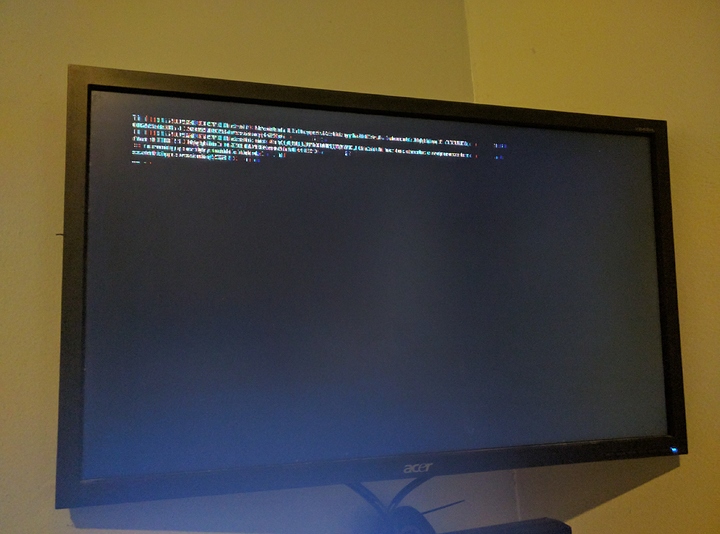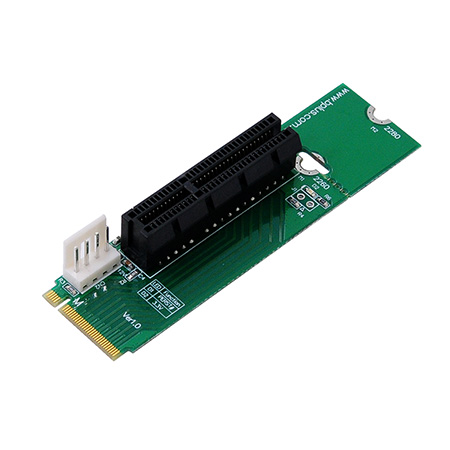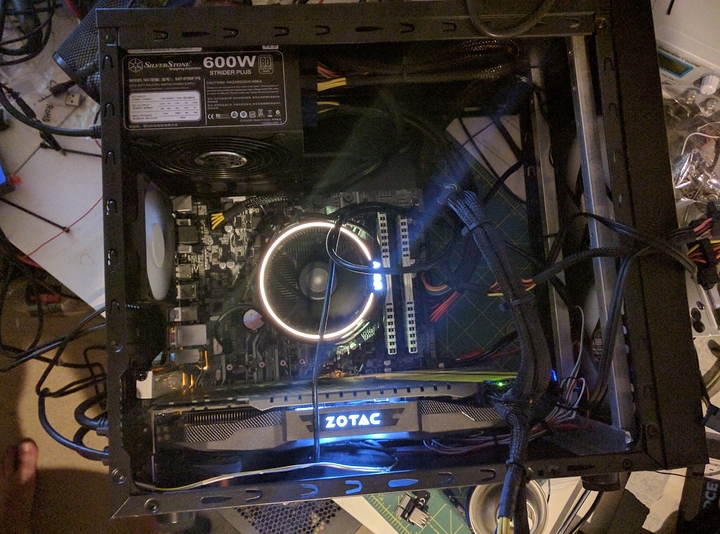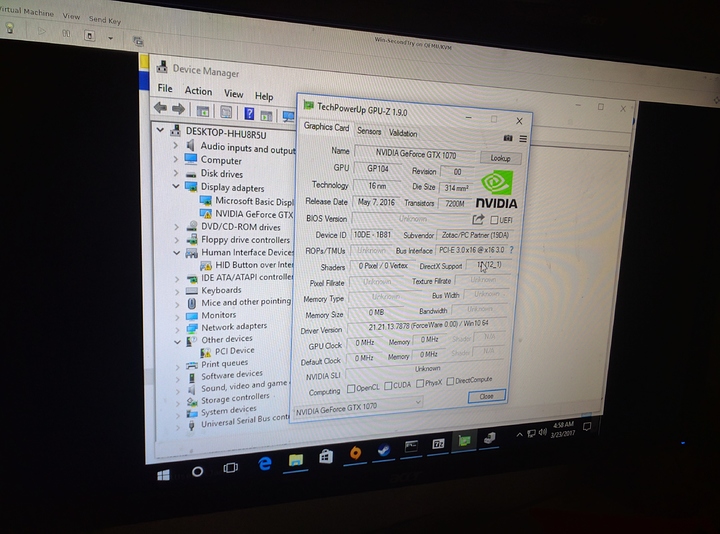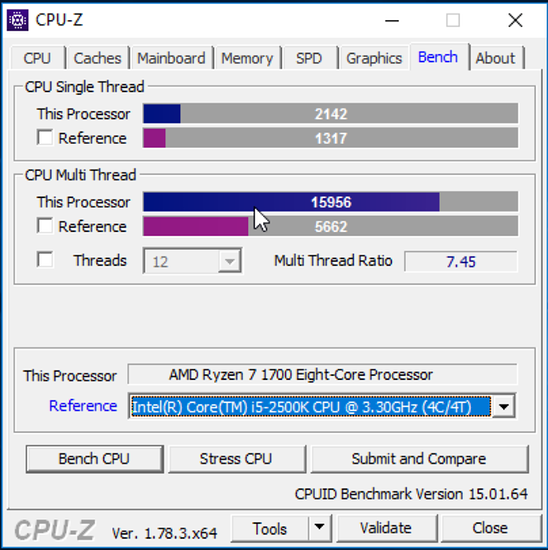I did some tests with an Asus Crosshair VI Hero lately. Graphic cards available: nVidia 1080, AMD 7850 and a passive NVIDIA GT520 (from an old htpc). First I tried messing around just with the 1080 and the 7850. But the setting is similar to your posted ones:
IOMMU Group 0 00:01.0 Host bridge [0600]: Advanced Micro Devices, Inc. [AMD] Device [1022:1452]
IOMMU Group 0 00:01.3 PCI bridge [0604]: Advanced Micro Devices, Inc. [AMD] Device [1022:1453]
IOMMU Group 0 03:00.0 USB controller [0c03]: Advanced Micro Devices, Inc. [AMD] Device [1022:43b9] (rev 02)
IOMMU Group 0 03:00.1 SATA controller [0106]: Advanced Micro Devices, Inc. [AMD] Device [1022:43b5] (rev 02)
IOMMU Group 0 03:00.2 PCI bridge [0604]: Advanced Micro Devices, Inc. [AMD] Device [1022:43b0] (rev 02)
IOMMU Group 0 1d:00.0 PCI bridge [0604]: Advanced Micro Devices, Inc. [AMD] Device [1022:43b4] (rev 02)
IOMMU Group 0 1d:02.0 PCI bridge [0604]: Advanced Micro Devices, Inc. [AMD] Device [1022:43b4] (rev 02)
IOMMU Group 0 1d:03.0 PCI bridge [0604]: Advanced Micro Devices, Inc. [AMD] Device [1022:43b4] (rev 02)
IOMMU Group 0 1d:04.0 PCI bridge [0604]: Advanced Micro Devices, Inc. [AMD] Device [1022:43b4] (rev 02)
IOMMU Group 0 1d:05.0 PCI bridge [0604]: Advanced Micro Devices, Inc. [AMD] Device [1022:43b4] (rev 02)
IOMMU Group 0 1d:06.0 PCI bridge [0604]: Advanced Micro Devices, Inc. [AMD] Device [1022:43b4] (rev 02)
IOMMU Group 0 1d:07.0 PCI bridge [0604]: Advanced Micro Devices, Inc. [AMD] Device [1022:43b4] (rev 02)
IOMMU Group 0 21:00.0 USB controller [0c03]: ASMedia Technology Inc. Device [1b21:1343]
IOMMU Group 0 23:00.0 Ethernet controller [0200]: Intel Corporation I211 Gigabit Network Connection [8086:1539] (rev 03)
IOMMU Group 1 00:02.0 Host bridge [0600]: Advanced Micro Devices, Inc. [AMD] Device [1022:1452]
IOMMU Group 2 00:03.0 Host bridge [0600]: Advanced Micro Devices, Inc. [AMD] Device [1022:1452]
IOMMU Group 2 00:03.1 PCI bridge [0604]: Advanced Micro Devices, Inc. [AMD] Device [1022:1453]
IOMMU Group 2 00:03.2 PCI bridge [0604]: Advanced Micro Devices, Inc. [AMD] Device [1022:1453]
IOMMU Group 2 29:00.0 VGA compatible controller [0300]: NVIDIA Corporation GP104 [GeForce GTX 1080] [10de:1b80] (rev a1)
IOMMU Group 2 29:00.1 Audio device [0403]: NVIDIA Corporation GP104 High Definition Audio Controller [10de:10f0] (rev a1)
IOMMU Group 2 2a:00.0 VGA compatible controller [0300]: Advanced Micro Devices, Inc. [AMD/ATI] Pitcairn PRO [Radeon HD 7850 / R7 265 / R9 270 1024SP] [1002:6819]
IOMMU Group 2 2a:00.1 Audio device [0403]: Advanced Micro Devices, Inc. [AMD/ATI] Cape Verde/Pitcairn HDMI Audio [Radeon HD 7700/7800 Series] [1002:aab0]
IOMMU Group 3 00:04.0 Host bridge [0600]: Advanced Micro Devices, Inc. [AMD] Device [1022:1452]
IOMMU Group 4 00:07.0 Host bridge [0600]: Advanced Micro Devices, Inc. [AMD] Device [1022:1452]
IOMMU Group 4 00:07.1 PCI bridge [0604]: Advanced Micro Devices, Inc. [AMD] Device [1022:1454]
IOMMU Group 4 2b:00.0 Non-Essential Instrumentation [1300]: Advanced Micro Devices, Inc. [AMD] Device [1022:145a]
IOMMU Group 4 2b:00.2 Encryption controller [1080]: Advanced Micro Devices, Inc. [AMD] Device [1022:1456]
IOMMU Group 4 2b:00.3 USB controller [0c03]: Advanced Micro Devices, Inc. [AMD] Device [1022:145c]
IOMMU Group 5 00:08.0 Host bridge [0600]: Advanced Micro Devices, Inc. [AMD] Device [1022:1452]
IOMMU Group 5 00:08.1 PCI bridge [0604]: Advanced Micro Devices, Inc. [AMD] Device [1022:1454]
IOMMU Group 5 2c:00.0 Non-Essential Instrumentation [1300]: Advanced Micro Devices, Inc. [AMD] Device [1022:1455]
IOMMU Group 5 2c:00.2 SATA controller [0106]: Advanced Micro Devices, Inc. [AMD] FCH SATA Controller [AHCI mode] [1022:7901] (rev 51)
IOMMU Group 5 2c:00.3 Audio device [0403]: Advanced Micro Devices, Inc. [AMD] Device [1022:1457]
IOMMU Group 6 00:14.0 SMBus [0c05]: Advanced Micro Devices, Inc. [AMD] FCH SMBus Controller [1022:790b] (rev 59)
IOMMU Group 6 00:14.3 ISA bridge [0601]: Advanced Micro Devices, Inc. [AMD] FCH LPC Bridge [1022:790e] (rev 51)
IOMMU Group 7 00:18.0 Host bridge [0600]: Advanced Micro Devices, Inc. [AMD] Device [1022:1460]
IOMMU Group 7 00:18.1 Host bridge [0600]: Advanced Micro Devices, Inc. [AMD] Device [1022:1461]
IOMMU Group 7 00:18.2 Host bridge [0600]: Advanced Micro Devices, Inc. [AMD] Device [1022:1462]
IOMMU Group 7 00:18.3 Host bridge [0600]: Advanced Micro Devices, Inc. [AMD] Device [1022:1463]
IOMMU Group 7 00:18.4 Host bridge [0600]: Advanced Micro Devices, Inc. [AMD] Device [1022:1464]
IOMMU Group 7 00:18.5 Host bridge [0600]: Advanced Micro Devices, Inc. [AMD] Device [1022:1465]
IOMMU Group 7 00:18.6 Host bridge [0600]: Advanced Micro Devices, Inc. [AMD] Device [1022:1466]
IOMMU Group 7 00:18.7 Host bridge [0600]: Advanced Micro Devices, Inc. [AMD] Device [1022:1467]
That means: There will be issues. So the solution was also to go for the x4-Slot, which always is initialized first, when being used. However, that is, where I ALWAYS got a kernel panic, when putting the AMD card here. Only exception is the ARCH installer disc. This one is crying, that AMD-VI seems to have an issue, however, its not panicking. This happened even with the Ubuntu 17.04 BETA2 files. Means, that the Ryzen patches are in there. But that is when I opened my old HTPC and replaced the AMD card with the GT520. And like a miracle, the system is booting.
Seems, that either the radeon and/oder blobbed equivalent driver have massive issues, when the AMD gpu is not in an designated CPU-GPU-laned slot. But I am not fit enough regarding these issues to open a bugtracker ticket somewhere, so that will either require your help or I will have to leave that topic for now.
Next steps will be to try to run a KVM with the GT520 as "main gpu" and the 1080 as vfio'ed one. Lets see when I will have time to dig into that more...
Any news from getting your bios exported, @witnaaay?
Regards, Bigfoot29
